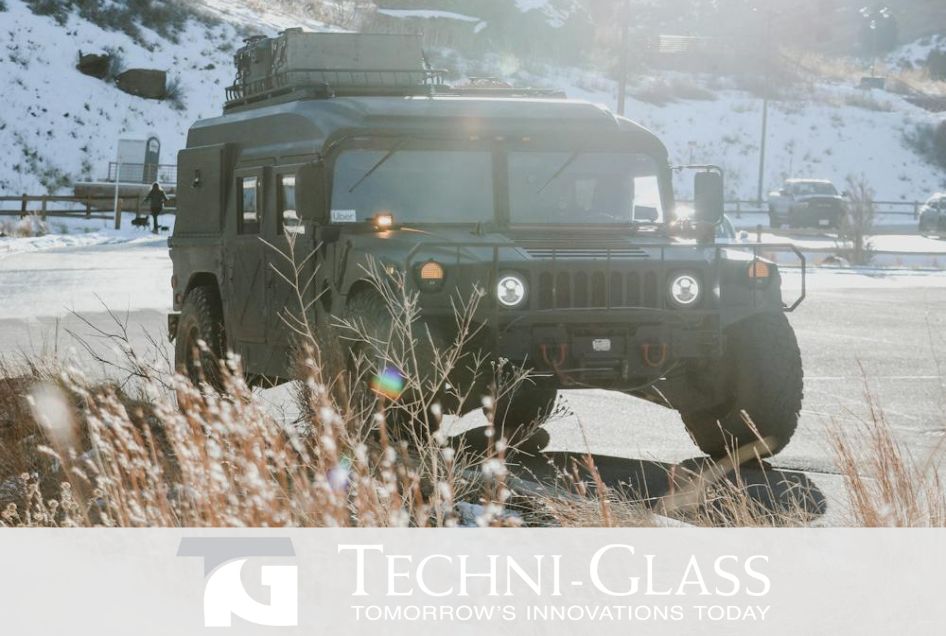With May being National Military Appreciation Month, Techni-Glass would like to honor the sacrifices and innovation of the United States Armed Forces. This article delves into the cutting-edge applications of glass in military advancements, highlighting its transformative role in enhancing defense capabilities worldwide.
1. Transparent Armor:
Traditional armored vehicles rely on heavy steel plating to withstand ballistic threats. However, this approach compromises maneuverability and increases vehicle weight. Glass innovations have led to the development of transparent armor, which offers equivalent or superior protection at a fraction of the weight. Advanced composite materials, such as transparent ceramics and laminates, provide excellent ballistic resistance while maintaining optical clarity. This enables military vehicles to enhance their survivability without sacrificing agility, making them more adaptable to modern combat scenarios.
Read more:
2. Ballistic Eyewear and Helmets:
The safety of military personnel is paramount, especially in hostile environments where ballistic threats are prevalent. Glass innovations have led to the production of lightweight, impact-resistant eyewear and helmets that offer unparalleled protection without compromising visibility. High-strength polycarbonate lenses and visors, fortified with specialized coatings and laminates, provide soldiers with the enhanced ballistic and optical performance. This ensures that they maintain situational awareness while minimizing the risk of eye and head injuries in combat situations.
3. Advanced Optics:
Optical systems play a crucial role in reconnaissance, targeting, and surveillance operations conducted by the military. Glass innovations have revolutionized the field of optics, enabling the development of lightweight, high-resolution imaging systems with enhanced durability and performance. Precision glass molding techniques allow for the fabrication of complex lens designs with minimal distortion and aberration, improving the accuracy and reliability of military optics. Additionally, advancements in augmented reality and heads-up display technologies have integrated critical information directly into soldiers’ field of view, enhancing their situational awareness and decision-making capabilities on the battlefield.
Read more:
4. Solar Power and Energy Harvesting:
The military operates in diverse environments, often with limited access to traditional sources of energy. Glass innovations have facilitated the integration of solar power and energy harvesting technologies into military equipment and infrastructure. Transparent photovoltaic panels, embedded in windows, tents, and portable devices, allow for the generation of renewable energy while maintaining transparency and functionality. This enables military units to reduce their reliance on fossil fuels, enhance their operational sustainability, and extend their range and endurance in remote or austere environments.
Read more:
5. Structural Applications:
Glass composites and ceramics have found applications beyond ballistic protection, contributing to the development of lightweight, high-strength structures for military platforms and equipment. Advanced glass-reinforced polymers and composite materials offer superior strength-to-weight ratios compared to traditional metals, enabling the construction of aircraft, maritime vessels, and shelters that are both durable and lightweight. This results in increased payload capacity, fuel efficiency, and operational flexibility for military forces operating in diverse theaters of operation.
Read more:
Learn More
Learn about what services and products Techni-Glass has to offer. Get in touch today!

